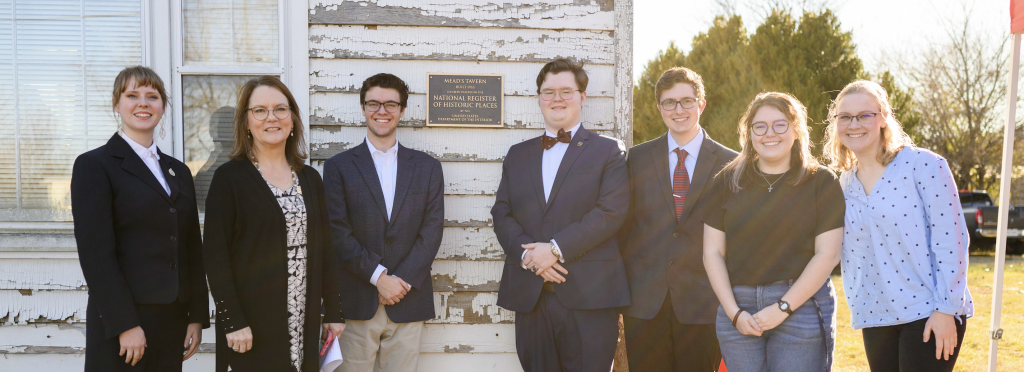In the 1700s, long before bustling cars and busy college campuses, Lynchburg was merely a crossing for boats as they traveled and traded.
Just a few miles outside of Lynchburg was the bustling town of New London, scattered with buildings and homes. In the colonial period, this town served as one of the main stops for travelers heading west, and a place for public figures like Thomas Jefferson to gather.
One building called Mead’s Tavern served as a hub of community for the people of the town. It attracted people traveling or gathering to meet friends, and it provided a place where people could be entertained and hear news about current events. The tavern also offered them a place to rest before their long journeys into the unknown.
Life in New London now is quite different from those days. However, Mead’s Tavern still remains.
In November 2021, this historic building was named to the National Register of Historic Places, joining the family of numerous other buildings in Lynchburg already on the list.
“Mead’s being added to the National Register of Historic Places is an honorary designation,” Randy Lichtenberger, director of cultural resources at Hurt and Proffit, said.
“We always knew that Mead’s Tavern was special. Now everyone (else) can know it too,” Donna Davis Donald, professor and director of public history initiatives at Liberty, said.
This building, with such a vibrant past, has not stopped there. Since Liberty purchased the building, it has been a place for students to research and gain important experiences.
In the past year, Mead’s Tavern has undergone many projects, including a basement re-stabilization and an upcoming preservation plan, which will offer recommendations for future improvements to the building.
“We hope to have a combination of restored spaces and exhibit spaces as well as interactive exhibits (such as classrooms and research spaces),” Donald said regarding the future of Mead’s Tavern and the preservation project.
The preservation plan proposes the creation of a multi-purpose space where visitors can see the exposed, unrestored walls of some of the building.
“This is a new movement in current preservation,” Lichtenberger said. “Allowing the visitors to recognize the value and being able to see that change from unrestored to restored.”
Mead’s Tavern left a significant mark on the New London community. Once a gathering point for many people, the building now serves as a reminder of the past.
“Mead’s Tavern will continue to be a center of student research bringing people to New London,” Donald said. “It will be a great benefit to the community and give (a) sense of new identity to a historic town.”
For more information or to help preserve other New London historical sites, students can visit the Friends of New London website at www.newlondonmuseum.org or Liberty’s website for New London projects at www.liberty.edu/arts-sciences/history/new-london-projects/.
Pace is a feature reporter.
